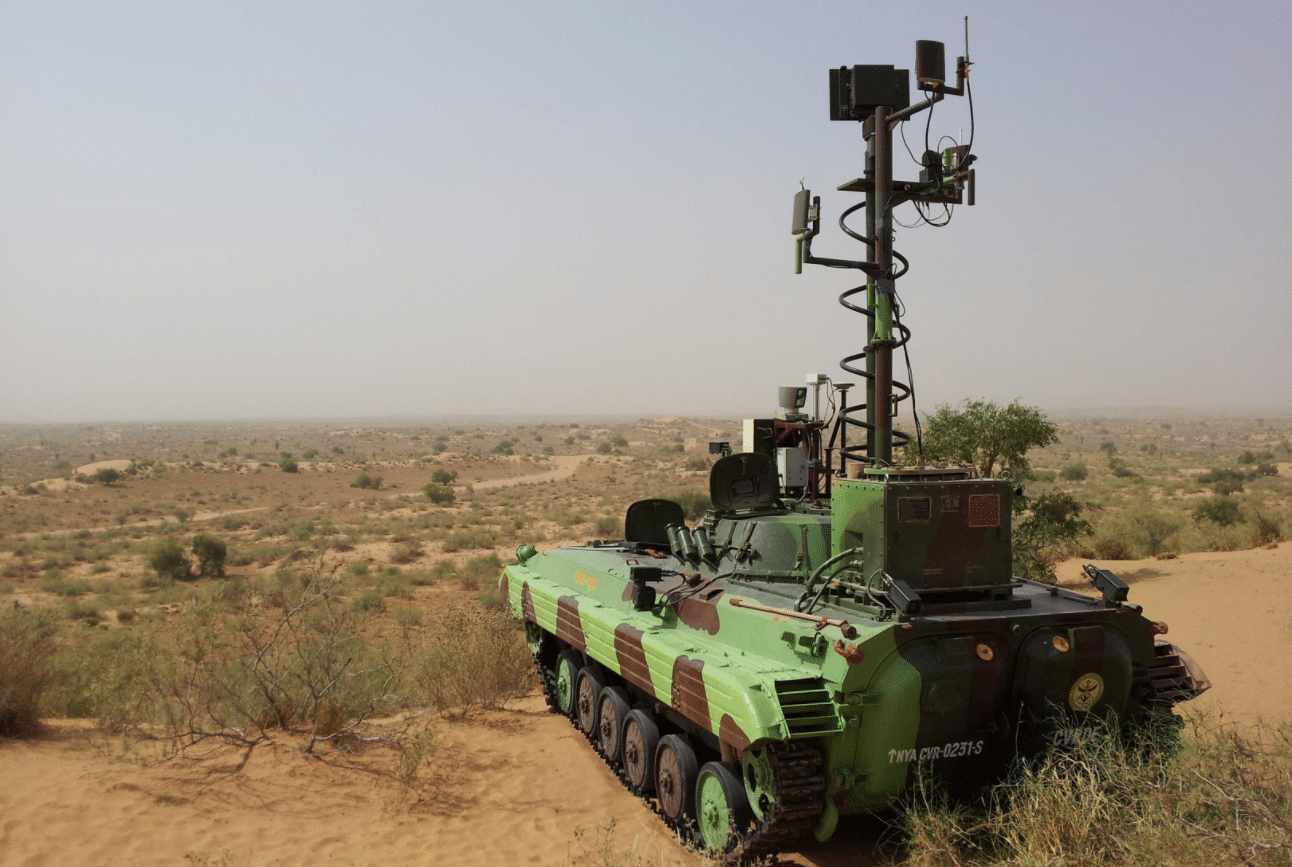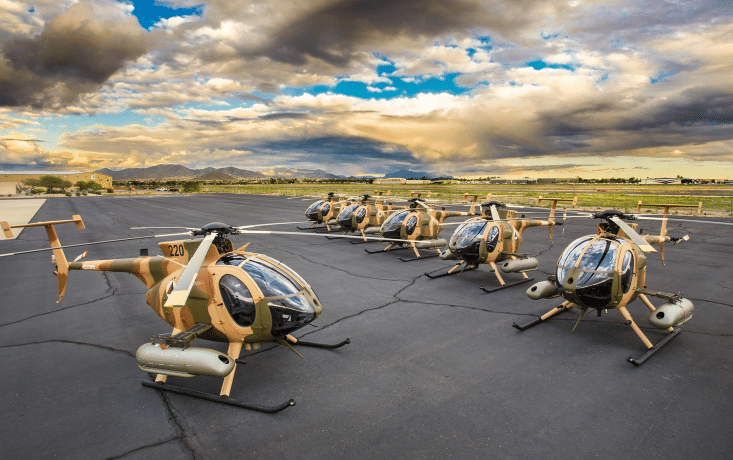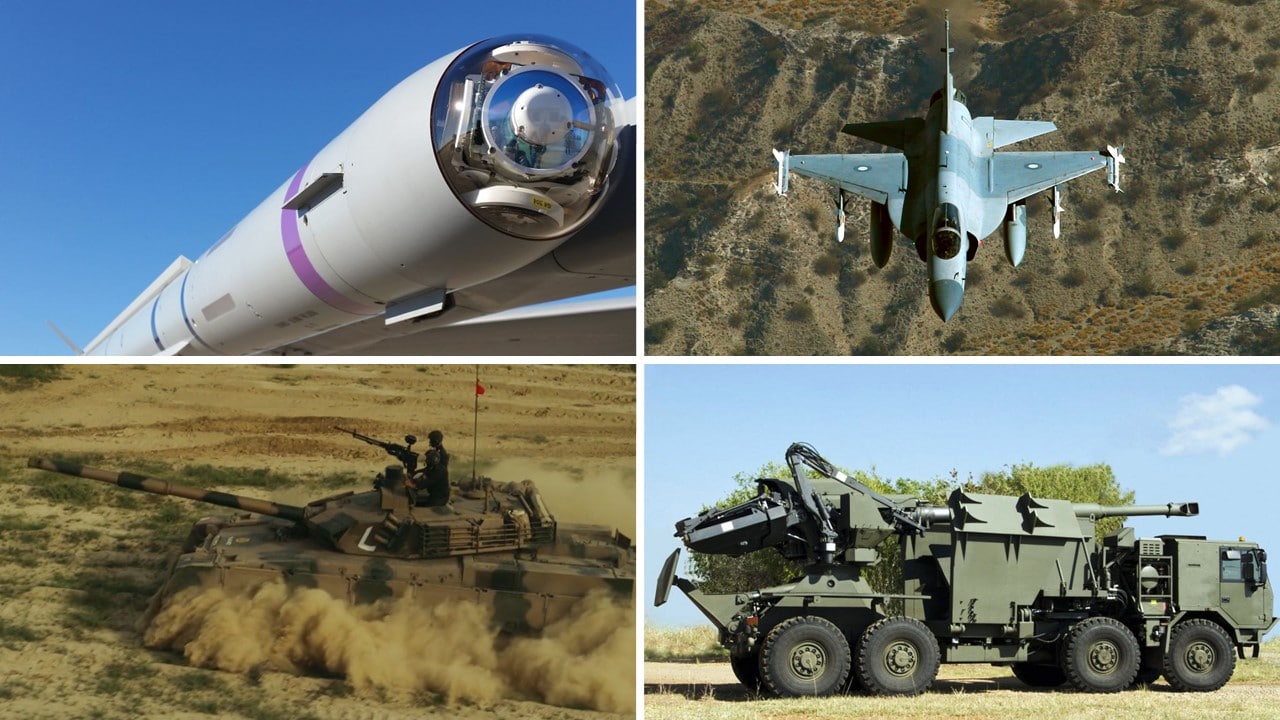2207Views 12Comments

DRDO showcases BMP-2 based Muntra UGV
The Defence Research & Development Organization (DRDO) has showcased its Muntra (short for “Mission Unmanned Tracked”) unmanned ground vehicle (UGV) for detecting mines and operations in nuclear, biological and chemical (NBC) conditions.
According to The Economic Times, DRDO’s Combat Vehicles Research and Development Establishment (CVRDE) had developed the Muntra for the Indian Army, but the system has also drawn interest from the country’s paramilitary outfits for counterinsurgency (COIN) use against Naxalite militants.
DRDO is pitching three Muntra variants: the Muntra-S for surveillance operations, the Muntra-M for mine-detection and the Muntra-N for areas ridden with NBC threats.
The Muntra’s tests were completed in the Mahajan field firing-range in Rajasthan, where DRDO was able to validate the UGV’s viability in hot-temperature (52°C) environments. It is equipped with a surveillance radar and electro-optical (EO) sensor with integrated laser rangefinder.
Notes & Comments:
The general objective of UGVs is to deploy vehicles in conditions that are excessively risky and/or outright inaccessible for on-site human input, such as NBC environments, diffusing bombs and entering ambushes. However, UGVs may be of interest beyond military applications, especially in high-risk civil security and civil services duties, such as law-enforcement and firefighting.
DRDO developed the Muntra upon the chassis of the BMP-2 tracked armoured personnel carrier (APC). The Muntra is a culmination of several DRDO projects aimed at UGV development. As per DRDO, these include “electro-optics, sensor fusion, electro-mechanical actuators and communication systems.”
In 2014, the Director of CVRDE Dr. P Sivakumar told Indian news outlets (such as The New Indian Express) that the Muntra’s radar has an instrumented range of 18 km. DRDO/CVRDE had tested the Muntra from a distance of 5 km and had the UGV travel up to an additional 12 km.
At the time, Dr. Sivakumar had cautioned that DRDO was in talks with the Indian Army to define the latter’s UGV requirements, the formation of which will inform the development of a serviceable platform. In 2010, the Indian Army did induct BMP-2-based NBC vehicles. If the Army were to adopt the Muntra, it has the option of recycling its existing fleet by retrofitting some vehicles into UGVs.
However, a new clean-sheet platform is an alternative. Many foreign UGVs have manifested in original platforms that are generally smaller and lighter (to varying degrees) than the Muntra. DRDO can also explore using its robotics work to UGV applications for mine/improved explosive device/bomb-detection and disposal; intelligence, surveillance and reconnaissance; and remote weapon system usage. Something lighter than the Muntra but larger than the DRDO Rudra and Daksh could be the long-term objective.
DRDO may get the opportunity to examine the Muntra’s viability – and that of the UGV concept as a whole – should the vehicle see adoption by the Indian Army and Central Reserve Police Force (CRPF), with the latter potentially using the UGV for COIN against Naxalite insurgents.



12 Comments
by amar
Hi! Bilal, thanks for the article. Sensor fusion forms an important part of any such autonomous vehicles. Here in this case they’ve LRDE’s BFSR, various EO sensors and probably magnetic sensors for mine detection. The integrated filtered output is what is used to classify threats and arrive at a conclusion. Here in this regard Neural networks can be brought to bear.
The most common example of sensor fusion that I often quote and something that I’ve myself implemented is – use of kalaman or complimentary filter to combine the readings of accelerometer and gyroscope to compute a stable angular displacement in various INS units like MPU6050
Also the autonomous control can be implemented using either designing your own autopilot or using commercial off the shelf products like APM or PX4. I’ve used both of them and you can find their details in my YouTube channel or github account where I host all my source codes.
Unfortunately the problem is, these commercial autopilots aint mil grade and hence can’t be used directly. Also they’re linear controllers
by jigsaw
India will probably anyway import some Israeli or another system to do the same job for obvious reasons.
by Amir Timur
Does Pakistan have any UGVs in this range or lighter? Any future plans or such? Could be extremely useful for both army and especially paramilitaries like the Frontier Corps, given the amount of casualties they take due to IEDs in Balochistan. Again, even the regular army has an option for using them for not only recce and patrol, but for medical evacuation etc. Market for this in the middle east might have some potential too.
by Headstrong
These were also tested in Shatrujeet, I believe
by jigsaw
kiya haal hay bhai
by Steve
Such stuff is routinely used by police forces in the West. It has been used in Northern Ireland by the British for 30 years. Much cheaper to import and the market is saturated with Western systems, given the Afghan and Iraq wars.
by Steve
Watch the film “The Hurt Locker”, even though it a glamorised Hollywood version. But it does gives some idea how IED are dealt with. It’s not as simple as DRDO saves the day!!
by Steve
But will you induct it. Not likely, given your history with DRDO products lol. Furthermore given subcontinental population and attitude realities, cheaper to get a guy in this rather than unmanned.
by Headstrong
You’ve obviously not understood its purpose, have you?
by Headstrong
All good. How you doing?
by amar
@disqus_1y2MoYiK2O:disqus
It will definitely be inducted in numbers deemed fit by the army. The point here is not if it’ll be inducted in numbers or not, the point here is India has definitive R&D capability that she can leverage in project like these. Also, of late, Indian pvt sector, is gradually getting themselves involved in various medium level projects such as design and development of 155mm/52cal arty, ATGMs, caninsterized launchers etc.
by Steve
It’s interesting that all your plans are in the future, with nothing inducted except projects with major Russian input. Just an observation that I hope you have insight to recognise.